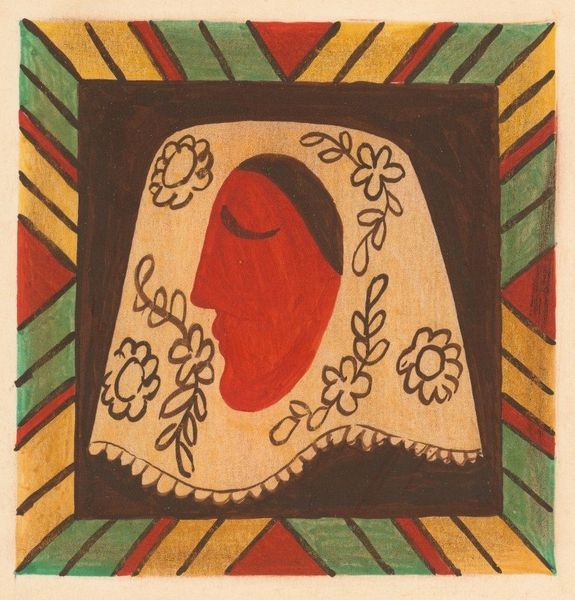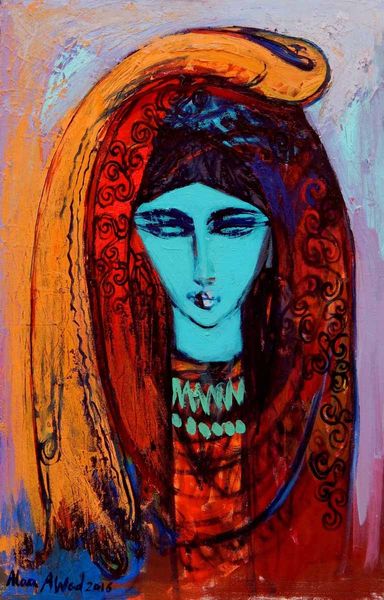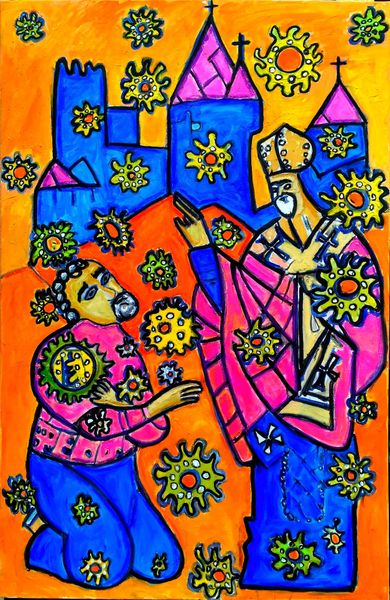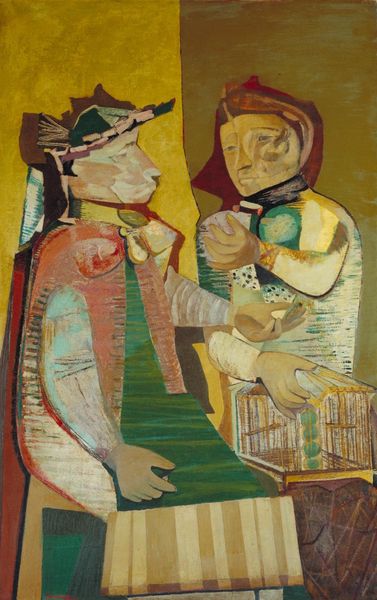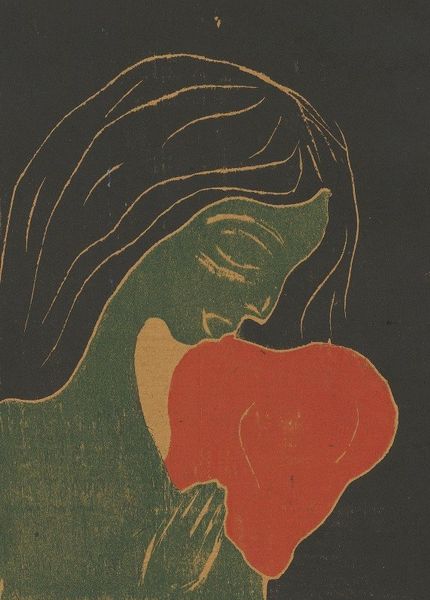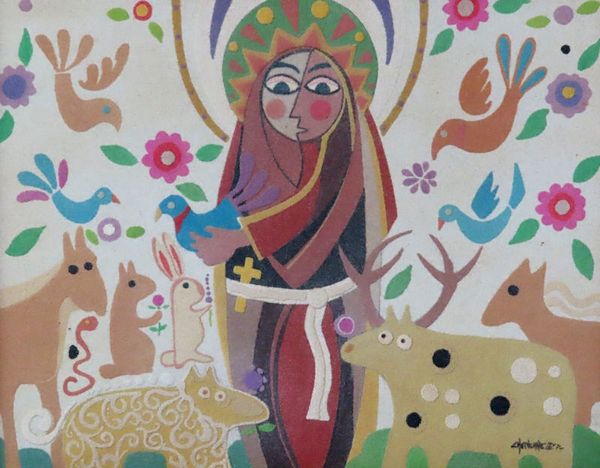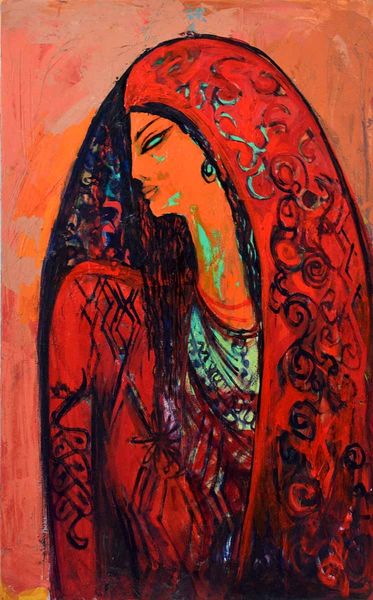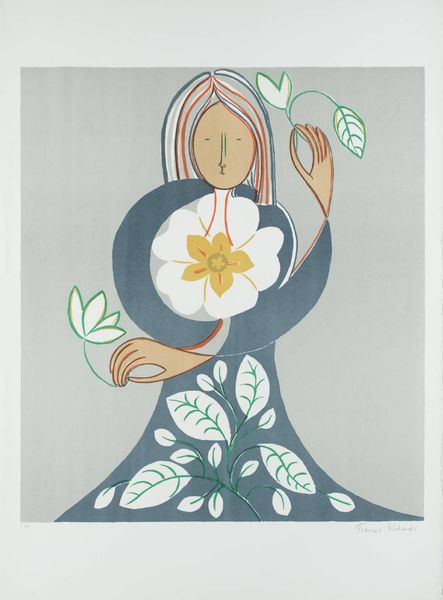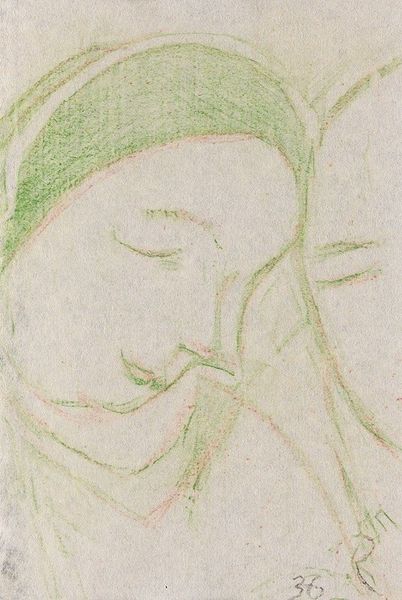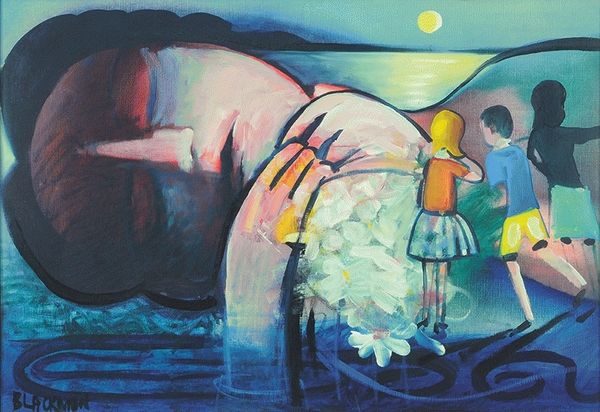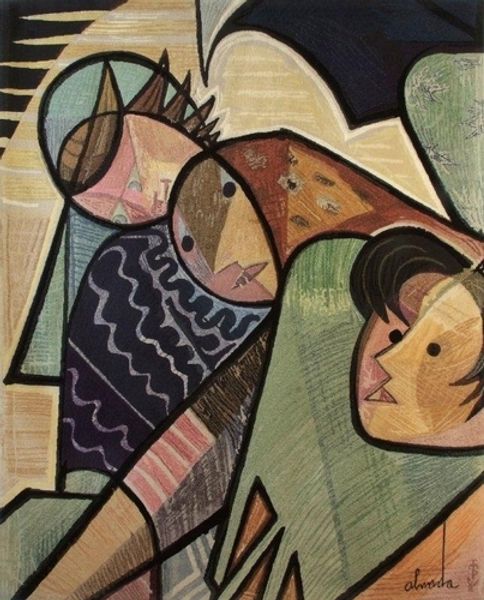
Copyright: Public Domain: Artvee
Curator: Mikuláš Galanda's "Woman", painted in 1938, captures a fascinating mood through simple forms and color. It's a watercolor piece. What are your initial impressions? Editor: A somber grace. The palette is muted, and yet those flashes of red on her chest and arms speak volumes about concealed passions. Curator: Absolutely. Red is almost always connected to primal energies, the root chakra if we’re exploring Kundalini, which resonates with the life-force he's captured, but restrained and inward-focused. Note, too, the ornamentation is minimal: some small symbols painted onto her exposed arm, possibly referencing archaic folk traditions, or ritualistic, even magical, practices. Editor: Yes, these folk symbols are telling. It hints at a world where female identity is not only defined by societal constraints but also by the enduring power of cultural symbols that are passed down and subtly re-interpreted from generation to generation. It reflects an internalized understanding of their position within that era, Slovakia on the verge of war. Curator: Precisely. The veil, both literally on her head and metaphorically, veiling the woman's true self, perhaps? There are interesting details to it: some leafy vines. They look like laurel to me: wisdom and eternity and associated with the God Apollo, maybe, or even echoes of Daphne fleeing Apollo’s advances by turning into a laurel tree. Editor: It evokes a struggle with external expectations clashing with inner life and how such burdens may shape women, even warping the true self for purposes of preservation or protest. This can be linked back to Galanda's own anxieties amid growing political tensions leading up to WWII. Curator: The power of symbols to hold trauma and endurance is clear. So often these visual markers provide a sense of cultural continuity, and a deeper exploration into hidden selves. Editor: These symbols may have helped Galanda process both inner emotional landscapes as well as provide a visual conduit to engage the rapidly changing world surrounding him. Curator: Thank you. It’s artworks such as these which give such a compelling vision to the era, by capturing in symbol a mood as powerful as this. Editor: And these layers offer multiple entry points that encourages dialogue between the social, historical and individual lived experience. Thank you.
Comments
No comments
Be the first to comment and join the conversation on the ultimate creative platform.
